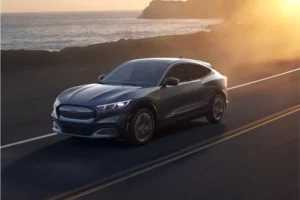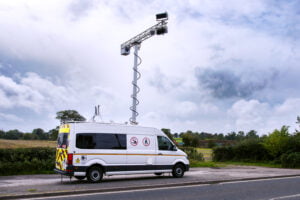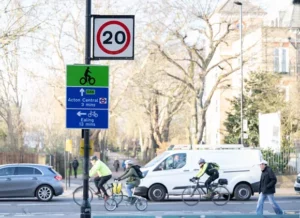Carmaker Ford is trialling connected vehicle technology using geofencing – a virtual geographical boundary – that it says could one day do away with the need for speed limit signs completely.
The company says drivers seeing limit signs depends on how visible they are, whether they are concealed by branches, or maybe surrounded by a cluster of other signs. It says the technology using a virtual geographical will potentially make streets safer for other road users and pedestrians, and could help drivers avoid inadvertently incurring speeding fines and improve roadside appearances.
“Connected vehicle technology has the proven potential to help make everyday driving easier and safer to benefit everyone, not just the person behind the wheel,” explained Michael Huynh, manager, City Engagement Germany, Ford of Europe. “Geofencing can ensure speeds are reduced where – and even when – necessary to help improve safety and create a more pleasant environment.”
Ford quotes figures which say that in Europe, up to 29% of road fatalities are pedestrians and cyclists, and that setting up 30 km/h (20 mph here) zones is considered one of the key measures to reduce the risk to pedestrians in urban areas, as drivers have more time to react and the impact speed is lower.
It adds that driver assistance technologies such as Ford’s Intelligent Speed Assist and Adaptive Cruise Control with Stop & Go already help ensure drivers do not exceed speed limits, and that its Geofencing Speed Limit Control system is potentially more flexible and effective than on-board systems, and could in future be applied to Ford commercial and passenger vehicles.
Researchers are using two Ford Pro vehicles to analyse the impact of speed limiting in terms of improving traffic flow and reducing the risk of accidents. Testing with the all-electric Ford E-Transit vans extends to all 30km/h zones in the centre of Cologne, in Germany, as well as in selected 50 km/h and 30 km/h zones elsewhere in the city.
The trial is the result of a collaboration between the Ford City Engagement team, city officials in Cologne and Aachen, and Ford software engineers in Palo Alto, in the US. Together with colleagues in Aachen, the Palo Alto engineers developed technology that connects the vehicle to the geofencing system for GPS tracking and data exchange.
The driver receives the information via the dashboard display cluster, with the new speed limit flashing below the current speed. The vehicle automatically reduces speed in line with the geofenced zone. The driver can override the system and deactivate the speed limit control at any time.
In the future, Ford says its Geofencing Speed Limit Control system could enable drivers to set their own geofencing zones at speeds as low as 20 km/h, including at depots and private facilities. Speed limits could also be set dynamically, to take into account local hazards, temporary road works and the time of day.
(Picture – Ford)





















